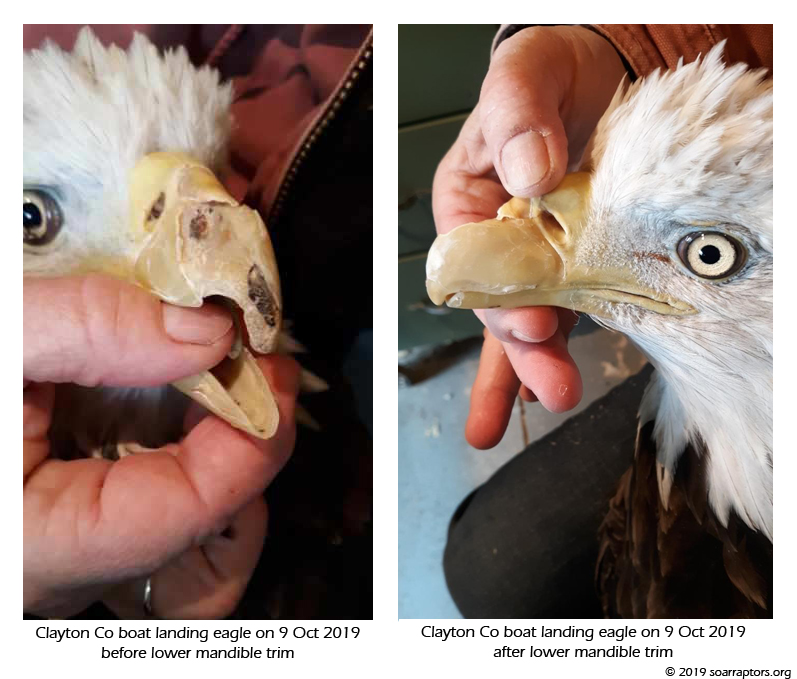Beaks and bills are the same structure, although beak was once used when referring to hooked bills. The beak is the only tool a bird has, used in finding and capturing and manipulating animal or plant food, preening, courtship, defense, building nests, communicating, and feeding young. So the beak really defines a lot of the bird’s niche. Parrots, hawks, and a few others use their talons for manipulating food or preening, but they are exceptions.

The two part bill consists of the bony skeleton of the jaws and the fleshy covering, the, rhamphotheca, which is similar in composition to our fingernails, made of keratin. Birds are constantly wearing the rhamphotheca down, so, also like our fingernails, it grows. (The Bald Eagle in the photo had an overgrown mandible and unable to eat.) Birds wipe their bills on branches to shape them to best handle the current diet that they are eating, seeds or insects for example. The unusual and spectacular Black Skimmer hunts by flying across the surface of the ocean with its lower bill in the sea, putting wear and tear on the lower jaw’s rhamphotheca.
The upper jaw or maxilla and lower jaw or mandible are the same as in other vertebrates, just elongated. There are no teeth, as evolution eliminated them to save weight, but several birds, such as mergansers, have teeth-like projections to capture fish, or ridges to help grasp vegetation, as geese do. Finches use their bill to manipulate and open seeds and some have an astonishingly strong bill, such as the grosbeaks or European Hawfinch that can crack open cherry and olive pits. Watch the sparrows and finches at your bird feeder and you might be able to determine the differences in the way species manipulate seeds and which ones can handle larger seeds.
Parrots and toucans don’t have bills with much crushing power; instead they open fruits and nuts by rolling and slicing them like two pairs of scissors. The bills of eagles and large hawks have sawing, crushing, and ripping power, but the few eagles I have handled were much more interested in putting their sharp talons into me. Besides obtaining and handling food, beaks may serve another function. Recently ornithologists discovered that the beak of the toucan does more than protect the bird’s eyes when it picks fruit in dense brush – it actually acts as a radiator to help cool the bird. Further research shows that birds in more northern climates have shorter bills than those of the same species farther south. Or the bill may have a function in sexual selection. The male pelican grows a keel-like projection on its bill during mating season and hornbills are well known for large decorative casques on their bills. But even the small female Swamp Sparrows might prefer males with bigger bills. Older males have bigger bills, which might signal an attraction to a female looking for an experienced mate. Or it may be that the size of the bill affects the song of the male.
Most interesting is the case of the now extinct Huia, a species of New Zealand Wattlebird. The females had an elongate, slender, decurved bill, and males a shorter, stouter, far straighter bill. Early observers assumed they were different species.
There’s still lots to learn about bills.
Pingback: Beaks and Bills – Ornithology - Pet Blog